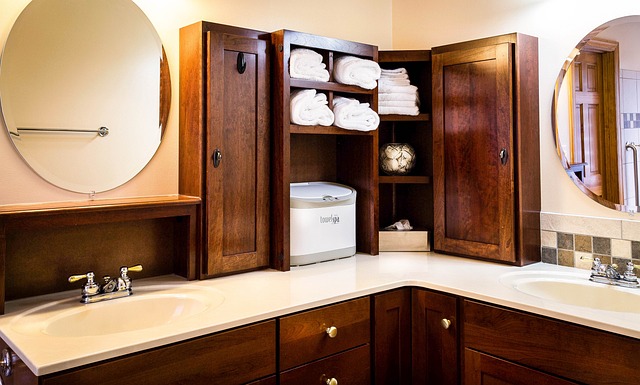Pantry Perfection: Organizing Food Staples And Dry Goods
There are some affiliate links below, but they are all products I highly recommend. For more info, view my disclosure here.
Are you tired of searching through a messy pantry for that one ingredient you need? It’s time to take control and achieve pantry perfection!
In this article, we will guide you through the process of organizing your food staples and dry goods.
Assess your pantry space, categorize your food, choose the right storage containers, and implement labeling and inventory systems.
With our tips, you’ll maximize shelf and drawer space, ensuring a well-organized pantry that is easy to maintain and update.
Get ready to transform your pantry into a functional and efficient space!
Assessing Your Pantry Space
Assessing your pantry space can help you determine the best way to organize your food staples and dry goods. Take a moment to step back and really evaluate the space you have available.
Look at the shelves, drawers, and any other storage areas in your pantry. Consider the height, width, and depth of each space. This will give you an idea of how much room you have to work with and what types of storage solutions will fit best.
Next, think about how you currently use your pantry. Are there certain foods or items that you reach for more often? Do you have any special dietary needs or preferences? Take these factors into account when deciding where to place your most frequently used items.
Consider organizing your pantry based on categories, such as baking supplies, canned goods, snacks, and spices. This will make it easier to find what you need and keep everything tidy.
Lastly, think about how to maximize your storage space. Are there any empty gaps or unused areas in your pantry? Utilize bins, baskets, or shelf dividers to make the most of these spaces. Consider using clear containers or labels to easily identify what is inside each container. This will help you keep track of your inventory and prevent food waste.
Categorizing Your Food
Once you’ve sorted and categorized your items, it’s important to keep similar foods together for easy access. This will save you time and effort when you’re searching for specific ingredients or items in your pantry. Start by grouping similar items, such as canned goods, grains, spices, and snacks. Place them in designated areas or shelves, making sure they are easily visible and reachable.
Create labels for each category to avoid confusion and help maintain organization. Use clear containers or bins for smaller items like spices or packets. This will prevent them from getting lost and make it easier to find what you need. Keep frequently used items at eye level or within arm’s reach for convenience.
Arrange your pantry in a way that makes sense to you. For example, group breakfast items together, such as cereals, oatmeal, and pancake mix. Place baking essentials like flour, sugar, and baking powder in one area. This way, when you’re preparing a meal or baking a treat, everything you need will be within reach.
Choosing the Right Storage Containers
When choosing the right storage containers, it’s important to consider the size, material, and functionality that will best suit your needs.
First, think about the size of the containers you will need. Are you storing small spices or large bags of flour? Make sure the containers you choose can hold the amount of food you typically buy.
Next, consider the material of the containers. Plastic containers are lightweight and easy to clean, while glass containers are more durable and can be used in the microwave or oven. Think about your personal preferences and how you plan to use the containers.
Finally, consider the functionality of the containers. Do you want stackable containers to maximize your storage space? Are you looking for containers with airtight lids to keep your food fresh? Take some time to think about how you will use the containers and what features will be most beneficial to you.
Labeling and Inventory Systems
To keep track of your items and ensure easy access, consider implementing a labeling and inventory system. By labeling your food staples and dry goods, you can easily identify what you have and where it is located in your pantry. This simple step can save you time and frustration when trying to find ingredients for your meals.
Start by categorizing your items and creating labels for each category. For example, you can have labels for grains, canned goods, baking supplies, and snacks. Use a label maker or even just a marker and tape to create clear and visible labels for each container or shelf in your pantry.
Once you have labeled everything, it’s time to create an inventory system. This can be as simple as creating a spreadsheet or using a mobile app to keep track of what you have and when it expires. Regularly update your inventory as you use or restock items to ensure accuracy.
Having a labeling and inventory system in place will not only help you keep your pantry organized, but it will also prevent food waste and save you money. No more buying duplicates of items you already have or letting food go bad because you forgot it was there.
So take a few minutes to set up a labeling and inventory system, and enjoy the benefits of a perfectly organized pantry.
Maximizing Shelf and Drawer Space
Using clear containers and stackable bins can help you maximize shelf and drawer space in your kitchen. When it comes to organizing your pantry, every inch counts. By using clear containers, you can easily see what’s inside without having to rummage through countless bags and boxes.
Stackable bins are another great way to utilize vertical space and keep your items neatly organized. They allow you to create multiple layers of storage, making the most out of your pantry’s limited space.
Start by transferring your dry goods such as rice, pasta, and cereal into clear containers. Not only will this keep them fresh for longer, but it will also make it easier to see when you’re running low on a particular item.
Stackable bins are perfect for grouping similar items together, whether it’s canned goods, snacks, or baking supplies. You can easily slide them in and out of your pantry, accessing each layer without any hassle.
In addition to clear containers and stackable bins, consider utilizing shelf dividers and drawer organizers. These tools will help you separate and categorize different items, preventing them from getting jumbled together.
Maintaining and Updating Your Pantry
Consider regularly checking expiration dates and restocking items to maintain a well-stocked and up-to-date pantry. Keeping your pantry organized is important, but it’s equally crucial to ensure that the items you have on hand are fresh and ready to use. By routinely checking expiration dates, you can avoid the disappointment of finding expired products when you need them most.
Take a few minutes each month to go through your pantry and remove any items that are past their prime. This not only helps to keep your pantry organized, but it also ensures that you’re using ingredients that are safe and of the highest quality.
In addition to checking expiration dates, it’s essential to restock your pantry as needed. Make a list of the items that you use regularly and keep an eye on their quantities. When you start to run low, add those items to your shopping list. By staying on top of your pantry inventory, you’ll always have the ingredients you need for your favorite recipes. Restocking your pantry also gives you an opportunity to try new products or ingredients that you’ve been wanting to incorporate into your cooking.
Maintaining and updating your pantry is a simple yet effective way to ensure that you always have what you need on hand. By regularly checking expiration dates and restocking items, you can keep your pantry well-stocked, organized, and up-to-date.
So take a few moments each month to give your pantry the attention it deserves, and enjoy the peace of mind that comes with knowing you’re prepared for any culinary adventure.






